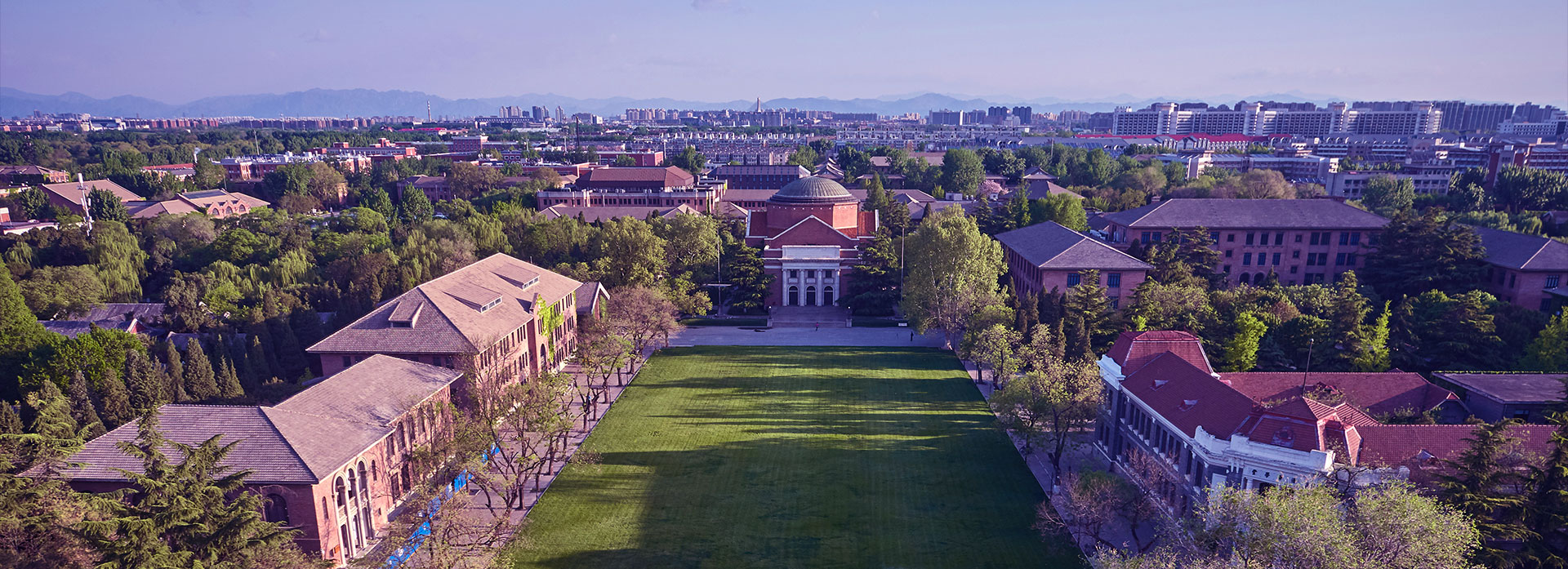

History
Tsinghua University was established in 1911, originally under the name “Tsing Hua Imperial College”. The school was renamed "Tsing Hua College" in 1912. The university section was founded in 1925. The name “National Tsing Hua University” was adopted in 1928.
The faculty greatly valued the interaction between Chinese and Western cultures, the sciences and humanities, the ancient and modern. Tsinghua scholars Wang Guowei, Liang Qichao, Chen Yinque and Zhao Yuanren, renowned as the "Four Tutors" in the Institute of Chinese Classics, advocated this belief and had a profound impact on Tsinghua's later development.
Following the outbreak of the War of Resistance against Japanese Aggression in 1937, National Tsing Hua University, National Peking University and Nankai University merged to form Lin-shih-ta-hsueh, which was renamed the National South-West Associated University in 1938 after moving to Kunming. In 1946 the University was moved back to its original location in Beijing after the war.
Three years after the founding of the People’s Republic of China, a nationwide restructuring of institutes of higher education began, and in 1952, Tsinghua University became a multidisciplinary polytechnic university specializing in training engineers. In November of that year,the Ministry of Education appointed Jiang Nanxiang as President.
Since 1978, Tsinghua University has strengthened its teaching in sciences, economic management, humanities and law. In 1999, Tsinghua opened the School of Arts and Design by merging with the Central Academy of Arts and Design. In 2012, the Graduate School of the People's Bank of China (PBC) merged into Tsinghua University as Tsinghua University PBC School of Finance. Today, Tsinghua has become a world-leading comprehensive university that offers subject areas in engineering, science, economics, management, art, medicine, philosophy, law,literature, history and education. Students are provided diversified development paths to advance their critical thinking and entrepreneurship through research-based learning.
Over the past over 100 years, Tsinghua University has witnessed and shared the hardships and glories of the nation. The University’s motto of “Self-discipline and Social Commitment” has inspired many generations of Tsinghua teachers and students to struggle for the prosperity of China.
In 2017, Tsinghua officially released its "Double First-Class (First-Class University &First-Class Disciplines)" development plan. As one of China’s most prestigious and influential universities, Tsinghua is committed to cultivating global citizens who will thrive in today’s world and become tomorrow’s leaders.Through the pursuit of education and research at the highest level of excellence, Tsinghua is developing innovative solutions that will help solve pressing problems in China and the world.
| 1911 - | Founding of "Tsing Hua Imperial College", later changed to "Tsing Hua College" (preparatory school for students to study in the USA) |
| 1925 - | Launching of four-year undergraduate programme |
| 1928 - | "National Tsing Hua University" is set up with 16 departments in four schools: the Liberal Arts, Law, Sciences, and Engineering |
| 1937 - | Tsinghua moved to Changsha, merging with National Peking University and Nankai University to form Lin-shih-ta-hsueh (Changsha Temporary University) |
| 1938 - | Moved to Kunming, changing its name to "National South-West Associated University" |
| 1946 - | Returned to the original campus, "Qing Hua Yuan (Tsinghua Garden)", in Beijing, and founded the School of Agriculture |
| 1952 - | Restructured as a polytechnic university after the nationwide restructuring |
| 1978 - | Nationwide College Entrance Examination is resumed |
| 1984 - | Establishes the first Graduate School in China. |
| ― School of Economic Management is formed out of the existing department of management engineering. | |
| ― School of Sciences resumes on the basis of science departments. | |
| 1985 - | First School of Continuing Education opens in China |
| 1988 - | Establishes School of Architecture |
| 1993 - | Former departments and research institutes in the humanities and social sciences merged as School of Humanities and Social Sciences |
| 1994 - | Establishes School of Information Science and Technology |
| 1996 - | Establishes School of Mechanical Engineering |
| 1999 - | School of Law reopens |
| ― Establishes School of Applied Sciences and Technology | |
| ― Establishes Academy of Arts and Design by merging with the Central Academy of Arts and Design | |
| 2000 - | Establishes School of Civil Engineering |
| ― Establishes School of Public Policy and Management. | |
| 2001 - | Establishes School of Medicine |
| 2002 - | Establishes School of Journalism and Communication |
| 2003 - | Merges Huaxin Hospital and Yuquan Hospital into Tsinghua |
| 2004 - | Establishes School of Aerospace |
| 2006 - | Peking Union Medical College changed its name to "Peking Union Medical College (Division of Medicine, Tsinghua University)" |
| 2008 - | Establishes School of Marxism |
| 2009 - | Establishes School of Life Sciences |
| 2011 - | Centenary Celebration |
| ― Establishes School of Environment | |
| 2012 - | PBC School of Finance, School of Humanities, School of Social Sciences, School of Materials Science and Engineering established |
| 2015 - | School of Pharmaceutical Sciences established Schwarzman College established |
| 2016 - | Department of Earth System Science established School of Clinical Medicine established |
| 2017 - | Department of the History of Science established |
| 2019 - | Department of Astronomy established School of Vehicle and Mobility established |
| 2020 - | Vanke School of Public Health established Zhili College established Rixin College established Weiyang College established Tanwei College established Xingjian College established |
| 2021 - | Qiuzhen College established School of Integrated Circuits established |
| 2022 - | Weixian College established National Graduate College for Engineers established |
| 2023 - | Xiuzhong College established School of Safety Science established |